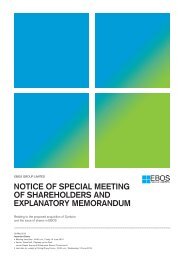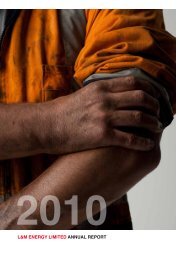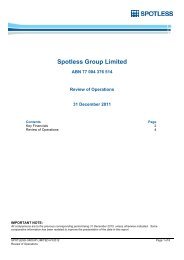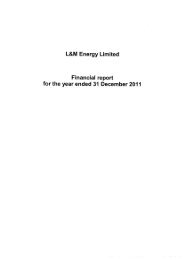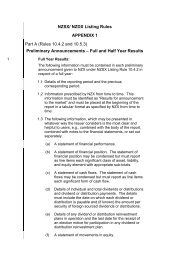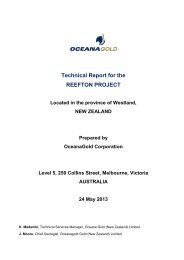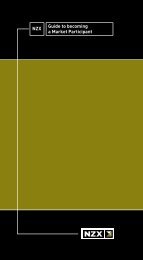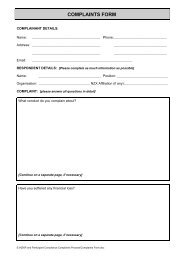Westpac Group Pillar 3 Report March 2013 - Iguana IR Sites
Westpac Group Pillar 3 Report March 2013 - Iguana IR Sites
Westpac Group Pillar 3 Report March 2013 - Iguana IR Sites
Create successful ePaper yourself
Turn your PDF publications into a flip-book with our unique Google optimized e-Paper software.
PILLAR 3 REPORT<br />
GLOSSARY<br />
Term<br />
Actual losses<br />
Advanced measurement<br />
approach (AMA)<br />
Assets intended to be securitised<br />
Australian and New Zealand<br />
Standard Industrial Classification<br />
(ANZSIC)<br />
Authorised deposit-taking<br />
institution (ADI)<br />
Banking book<br />
Common equity<br />
Credit Valuation Adjustment<br />
(CVA) risk<br />
Default<br />
Double default rules<br />
Exposure at default (EAD)<br />
Extended licensed entity (ELE)<br />
External Credit Assessment<br />
Institution<br />
(ECAI)<br />
Description<br />
Represent write-offs direct and write-offs from provisions after adjusting for<br />
recoveries.<br />
The capital requirement using the AMA is based on a bank’s internal<br />
operational risk systems, which must both measure and manage operational<br />
risk.<br />
Represents securitisation activity from the end of the reporting period to the<br />
disclosure date of this report.<br />
A code used by the Australian Bureau of Statistics and Statistics New<br />
Zealand for classifying businesses.<br />
ADIs are corporations that are authorised under the Banking Act 1959 to<br />
carry on banking business in Australia.<br />
The banking book includes all securities that are not actively traded by<br />
<strong>Westpac</strong>.<br />
The highest form of capital. The key components of common equity are<br />
shares, retained earnings and undistributed current year earnings.<br />
Refer to mark-to-market related credit risk.<br />
A customer default is deemed to have occurred when <strong>Westpac</strong> considers<br />
that either or both of the following events have taken place:<br />
the customer is unlikely to pay its credit obligations to its financiers in full,<br />
without recourse by any of them to actions such as realising security<br />
(where held); and<br />
the customer is past due 90 or more calendar days on any material credit<br />
obligation to its financiers. Overdrafts will be considered past due once the<br />
customer has breached an advised limit, or been advised of a limit smaller<br />
than the current outstandings.<br />
Double default rules refer to the rules governing the circumstances when<br />
capital can be reduced because a particular obligor's exposure has been<br />
hedged by the purchase of credit protection from a counterparty and loss will<br />
only occur if both obligor and counterparty default.<br />
EAD represents an estimate of the amount of committed exposure expected<br />
to be drawn by the customer at the time of default. To calculate EAD,<br />
historical data is analysed to determine what proportion of undrawn<br />
commitments are ultimately utilized by customers who end up in default. The<br />
proportion of undrawn commitments ultimately utilized is termed the Credit<br />
Conversion Factor (CCF). EAD thus consists of initial outstanding balances,<br />
plus the undrawn commitments multiplied by the CCF. For transactionmanaged<br />
accounts, the CCF is currently conservatively set at 100%. For<br />
program-managed accounts, the CCF varies depending upon historical<br />
experience.<br />
An Extended Licensed Entity (ELE) comprises an ADI and any subsidiaries<br />
of the ADI that have been approved by APRA as being part of a single<br />
‘stand-alone’ entity.<br />
ECAI is an external institution recognised by APRA (directly or indirectly) to<br />
provide credit assessment in determining the risk-weights on financial<br />
institutions’ rated credit exposures (including securitisation exposures).<br />
91



